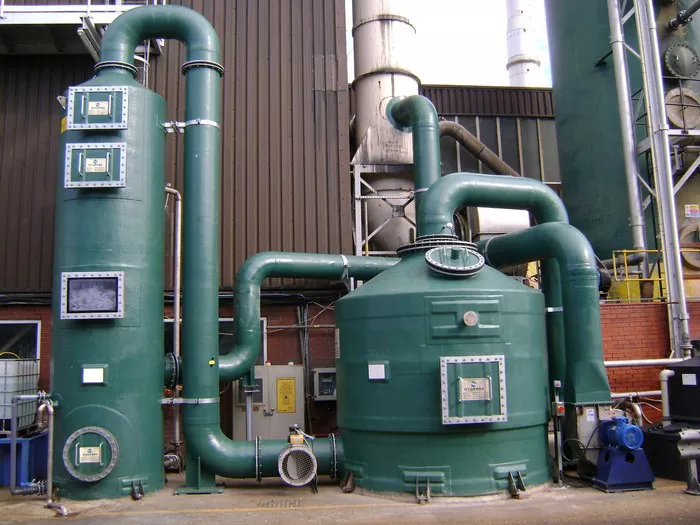Scrubbers, a vital component in industrial settings, play a crucial role in mitigating harmful emissions. Their effectiveness in reducing pollutants has garnered significant attention in recent years. This guide aims to provide a thorough examination of scrubbers, exploring their functionality, types, effectiveness, and considerations for implementation.
Understanding Scrubbers
Scrubbers are pollution control devices designed to remove harmful substances from exhaust gases before they are released into the atmosphere. They operate on the principle of contact between the pollutant-laden gas stream and a scrubbing solution, which absorbs or reacts with the pollutants, rendering them harmless.
Types of Scrubbers
There are various types of scrubbers available, each suited to different applications and pollutants:
1. Wet Scrubbers: These utilize a liquid (usually water) to capture and remove pollutants. Wet scrubbers can be further classified into several designs, such as venturi scrubbers, packed bed scrubbers, and spray tower scrubbers.
2. Dry Scrubbers: Unlike wet scrubbers, dry scrubbers use a dry sorbent or chemical reagent to adsorb or react with pollutants. They are often preferred in situations where water usage is restricted or when dealing with dry pollutants.
3. Semi-Dry Scrubbers: Combining aspects of both wet and dry scrubbers, semi-dry scrubbers use a limited amount of liquid to react with pollutants. They offer advantages such as reduced water consumption and easier handling of waste products.
Effectiveness of Scrubbers
The effectiveness of scrubbers depends on several factors, including the type of pollutant, scrubber design, operating conditions, and maintenance practices. Generally, scrubbers are highly efficient in removing particulate matter (PM), sulfur dioxide (SO2), nitrogen oxides (NOx), volatile organic compounds (VOCs), and other harmful substances.
Factors Affecting Effectiveness
1. Pollutant Characteristics: Different pollutants require specific scrubbing techniques for effective removal. For instance, acidic gases like SO2 are best treated with alkaline scrubbing solutions.
2. Scrubber Design: The design of the scrubber, including its size, configuration, and contact time between the gas and scrubbing solution, greatly influences its efficiency.
3. Operating Conditions: Factors such as gas flow rate, temperature, and humidity can impact scrubber performance. Optimal operating conditions must be maintained for maximum effectiveness.
4. Maintenance: Regular inspection, cleaning, and replacement of scrubber components are essential to ensure continued efficiency. Neglected maintenance can lead to reduced performance and increased emissions.
Considerations for Implementation
Before implementing scrubbers, several considerations must be taken into account:
1. Regulatory Compliance: Ensure that the chosen scrubber meets relevant environmental regulations and emission standards.
2. Cost-Benefit Analysis: Evaluate the upfront and operating costs of installing and maintaining scrubbers against the potential benefits of reduced emissions and regulatory compliance.
3. Space and Installation Requirements: Consider the space available for installing the scrubber, as well as any additional infrastructure needed for its operation.
4. Environmental Impact: Assess the environmental impact of the scrubber system, including energy consumption, water usage, and disposal of waste products.
Conclusion
Scrubbers are highly effective pollution control devices that play a crucial role in reducing emissions from industrial processes. By removing harmful pollutants from exhaust gases, scrubbers help mitigate air pollution and protect public health and the environment. However, their effectiveness depends on various factors, including pollutant characteristics, scrubber design, operating conditions, and maintenance practices. Careful consideration of these factors is essential when selecting and implementing scrubber systems to ensure optimal performance and regulatory compliance.
FAQs
Q1: How do scrubbers compare to other pollution control technologies?
A1: Scrubbers offer several advantages over other pollution control technologies, such as high removal efficiencies for a wide range of pollutants, flexibility in handling different types of emissions, and relatively low operating costs compared to alternatives like catalytic converters or electrostatic precipitators.
Q2: Can scrubbers eliminate all pollutants from exhaust gases?
A2: While scrubbers are highly effective in removing many pollutants, they may not eliminate all pollutants entirely. Factors such as the scrubber design, operating conditions, and characteristics of the pollutants influence the degree of removal. Some specialized pollutants may require additional treatment methods for complete elimination.
Q3: Are there any drawbacks to using scrubbers?
A3: While scrubbers offer significant benefits in reducing emissions, they also have some drawbacks to consider. These may include high initial investment costs, the consumption of resources such as water and energy, the generation of waste products that require proper disposal, and the need for regular maintenance to ensure continued effectiveness. However, the environmental and health benefits often outweigh these drawbacks.

